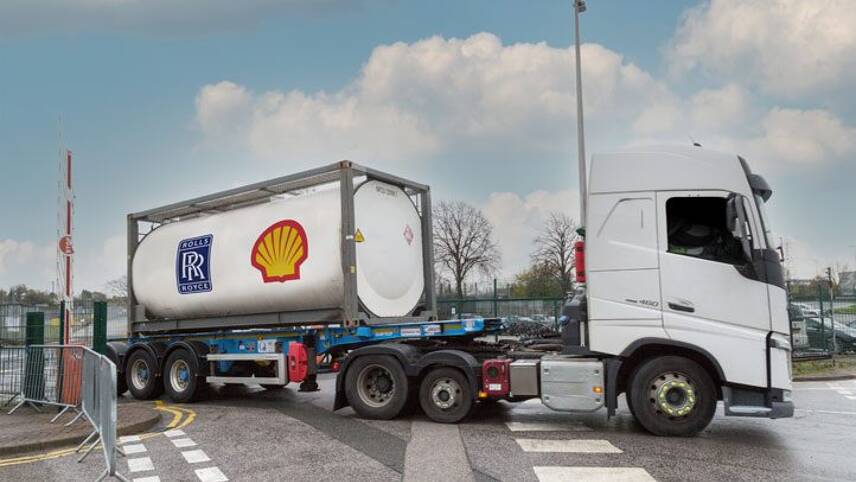Register for free and continue reading
Join our growing army of changemakers and get unlimited access to our premium content

The MoU will aim to develop SAFs
The two companies have signed the MoU to help decarbonise the aviation industry by developing SAFs to be used commercially.
The MoU will build on existing partnerships between the two firms to advance the development of SAFs, including Rolls-Royce’s new SAFinity service, for which Shell is the sole SAF supplier. The two companies want to demonstrate that SAFs can act as a “drop-in” solution to decarbonise aviation.
“The heritage of collaboration between Rolls-Royce and Shell is a strong foundation for the future, particularly when it comes to our shared ambitions for achieving net-zero emissions,” Shell Aviation’s president Anna Mascolo said.
“Being from different parts of the aviation value chain means Rolls-Royce and Shell bring complementary expertise, experiences and ideas to the table. Wide-ranging cooperation can drive new solutions that will help the aviation industry and our customers navigate a pathway to net-zero.”
Earlier this year, Shell published an updated business strategy in light of the Covid-19 pandemic and its pledge to reach net-zero emissions, which confirmed that 2019 will be its peak in terms of oil production. The company is aiming to become a net-zero business by 2050.
As for Rolls-Royce, the company recently outlined plans to overhaul its R&D spending and product offerings in a bid to reach net-zero operations by 2030 and net-zero across the whole business value chain by 2050.
A headline commitment is to ensure that all jet engines supplied to civil and business aviation firms are ready to run on 100% SAFs from 2023.
SAFs can reduce life-cycle emissions by up to 70% compared to traditional jet fuel. However, most airlines currently only use it in small proportions in blends – partly due to a lack of supply and partly because current international regulations limit biofuel blends to 50%. Rolls-Royce states that it is preparing for changes to legislation and technology in the near future, which will make SAF lower-carbon and increase supply.
“Supporting the decarbonisation of aviation while continuing to enable progress in flight are goals that Rolls-Royce and Shell both share,” Rolls-Royce’s chief technology officer Paul Stein said.
“We believe that working together on these aims can deliver benefits for both the development of new innovations as well as collaborating to find ways to unlock the net carbon emissions reduction potential of technology that is already in use today. SAFs will not only power large aircraft and business aviation, but also hybrid electric Urban Air Mobility (‘Flying taxis’) and the forthcoming generation of hybrid fixed wing city hoppers, which is why we place such importance on the ramp up of SAF adoption across the industry.”
SAFs taking off
Last month, Heathrow added aviation fuel made from waste oils and fats for the first time. The UK’s largest airport is seeking to establish proof of concept for the widescale use of SAFs in a bid to reduce emissions from flights.
The state of play for SAF in the UK is mixed. The technology has been supported by dozens of big businesses and with standalone funding from the Government.
However, some had been hoping for more Government funding and long-term support as part of the Covid-19 recovery package. Moreover, the UK’s first waste-to-SAF plant, spearheaded by Velocys, was dealt a blow earlier this year after Shell pulled out of the venture. Shell said in a statement in January that it was exiting the project after agreeing to jointly fund another plant in Canada, which developers claim could produce more than double the fuel using less than half the waste. Velocys expects to begin producing fuel to the original timeline of 2025, without Shell.
Questions also remain about the extent to which SAF can reduce the aviation sector’s climate impact in line with the Paris Agreement. The UK Government’s Climate Change Committee (CCC) recommended that, along with SAF, more should be done to scale electric aircraft and to cap demand growth. In fact, the CCC’s most optimistic for national use of SAFs is 7% by 2030.
Matt Mace


There is no such things as SAFs until you get to hydrogen. Burning biomass releases exactly the same carbon as fossil fuels, and should instead remain locked up. Get on with hydrogen – fast !!